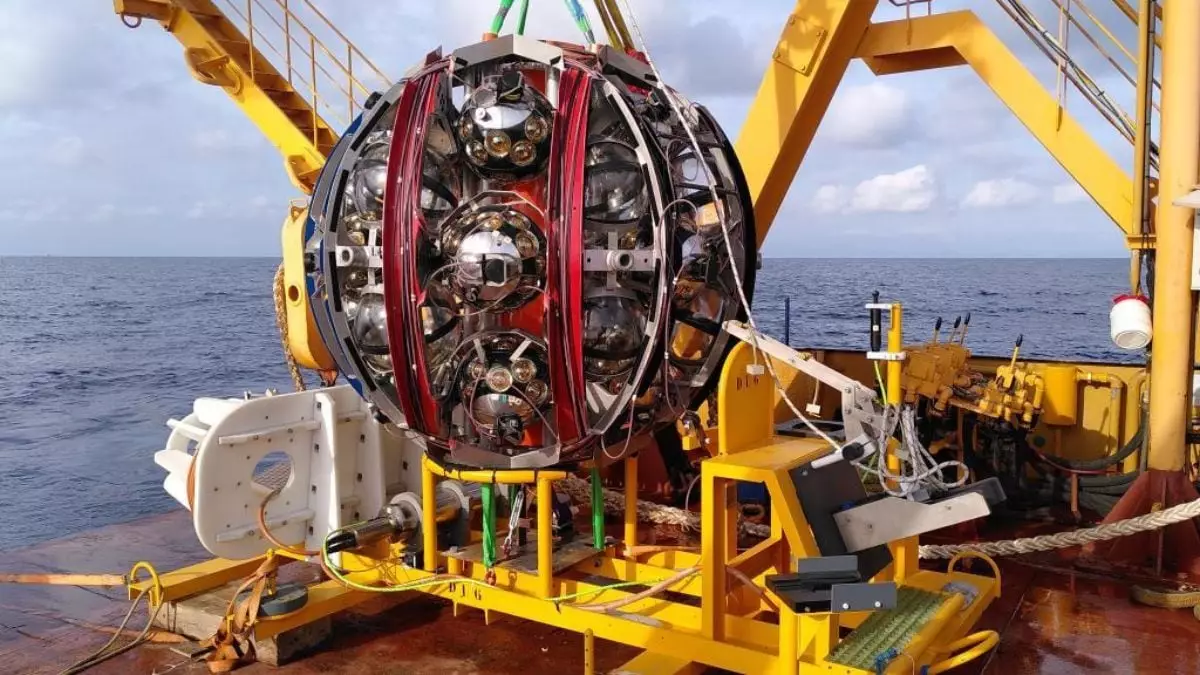The KM3NeT project represents a groundbreaking initiative in the pursuit of astrophysical knowledge, poised to significantly enhance our understanding of the universe. Located in the depths of the Mediterranean Sea, this underwater neutrino telescope is unique in its approach, utilizing the inherently elusive properties of high-energy neutrinos—subatomic particles that are difficult to detect due to their minimal interaction with matter. Unlike conventional astronomical instruments that observe visible light, KM3NeT seeks to make its mark by capturing the light emitted when neutrinos collide with water molecules, thereby paving the way for remarkable scientific discoveries.
Encompassing an impressive volume of one cubic kilometer, the KM3NeT infrastructure consists of two separate telescopes. Each telescope is outfitted with glass spheres filled with photomultiplier tubes that react to the faint light produced by neutrino interactions. This sophisticated technology, as explained by physicist Simone Biagi from Italy’s National Institute for Nuclear Physics, involves a precise deployment process. Cables resembling strands of pearls, extending up to 700 meters, are lowered to the seabed, where they meticulously unfurl to create a complex network of detectors.
The implementation of KM3NeT is no small feat. It mandates the use of remotely operated underwater vehicles for careful installation and configuration, ensuring each connection is perfect. This task is compounded by the challenging marine environment, where rough conditions can impede progress and demand exhaustive problem-solving skills from the physicists and engineers involved.
One of the primary objectives of KM3NeT is to capture high-energy neutrinos thought to originate from unknown cosmic sources. The telescope located near Sicily is focused on these celestial neutrinos, while a second system near the French coast aims to investigate atmospheric neutrinos and their oscillations. The study of these oscillations is particularly valuable in advancing our understanding of particle physics, providing distribution patterns that may suggest the existence of undiscovered particles or phenomena.
With such bold aspirations, the KM3NeT team is under considerable pressure. Annual deployment campaigns last approximately one month, during which time the crew remains acutely aware that any malfunction cannot be corrected after the equipment is submerged. This reality fosters a high-stakes environment that tests the limits of both teamwork and technical skill.
Even in its unfinished state, the KM3NeT project has already begun to yield significant scientific insights. Early data appears to offer glimpses into complex quantum gravity effects and the intriguing behaviors of neutrinos. Such findings could have profound implications for future research in cosmology and fundamental physics, potentially rewriting aspects of our understanding of the universe.
The KM3NeT initiative is not merely an engineering feat but a bold step toward unraveling some of the universe’s deepest mysteries. By harnessing innovative technology to explore the nature of neutrinos, scientists are setting the stage for numerous breakthroughs in particle physics and astrophysics. As research unfolds, the project will not only transform our knowledge but could also inspire the next generation of physicists and engineers to continue the quest for understanding the cosmos.


Leave a Reply